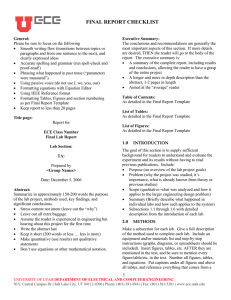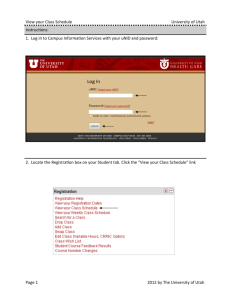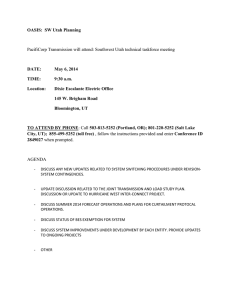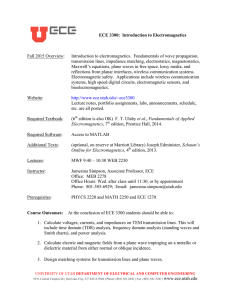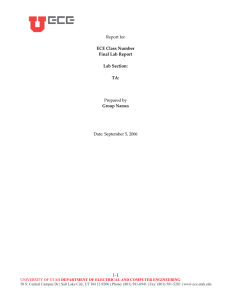WEEKLY REPORT CHECKLIST
advertisement
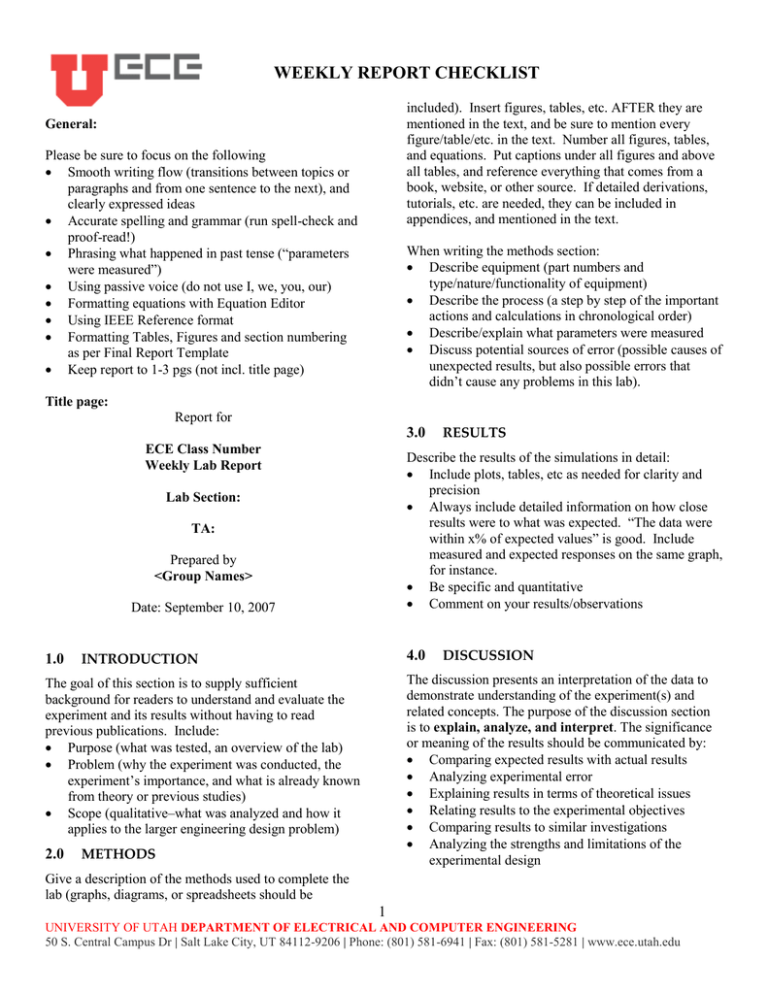
WEEKLY REPORT CHECKLIST included). Insert figures, tables, etc. AFTER they are mentioned in the text, and be sure to mention every figure/table/etc. in the text. Number all figures, tables, and equations. Put captions under all figures and above all tables, and reference everything that comes from a book, website, or other source. If detailed derivations, tutorials, etc. are needed, they can be included in appendices, and mentioned in the text. General: Please be sure to focus on the following Smooth writing flow (transitions between topics or paragraphs and from one sentence to the next), and clearly expressed ideas Accurate spelling and grammar (run spell-check and proof-read!) Phrasing what happened in past tense (“parameters were measured”) Using passive voice (do not use I, we, you, our) Formatting equations with Equation Editor Using IEEE Reference format Formatting Tables, Figures and section numbering as per Final Report Template Keep report to 1-3 pgs (not incl. title page) When writing the methods section: Describe equipment (part numbers and type/nature/functionality of equipment) Describe the process (a step by step of the important actions and calculations in chronological order) Describe/explain what parameters were measured Discuss potential sources of error (possible causes of unexpected results, but also possible errors that didn’t cause any problems in this lab). Title page: Report for 3.0 ECE Class Number Weekly Lab Report Describe the results of the simulations in detail: Include plots, tables, etc as needed for clarity and precision Always include detailed information on how close results were to what was expected. “The data were within x% of expected values” is good. Include measured and expected responses on the same graph, for instance. Be specific and quantitative Comment on your results/observations Lab Section: TA: Prepared by <Group Names> Date: September 10, 2007 1.0 4.0 INTRODUCTION DISCUSSION The discussion presents an interpretation of the data to demonstrate understanding of the experiment(s) and related concepts. The purpose of the discussion section is to explain, analyze, and interpret. The significance or meaning of the results should be communicated by: Comparing expected results with actual results Analyzing experimental error Explaining results in terms of theoretical issues Relating results to the experimental objectives Comparing results to similar investigations Analyzing the strengths and limitations of the experimental design The goal of this section is to supply sufficient background for readers to understand and evaluate the experiment and its results without having to read previous publications. Include: Purpose (what was tested, an overview of the lab) Problem (why the experiment was conducted, the experiment’s importance, and what is already known from theory or previous studies) Scope (qualitative–what was analyzed and how it applies to the larger engineering design problem) 2.0 RESULTS METHODS Give a description of the methods used to complete the lab (graphs, diagrams, or spreadsheets should be 1 UNIVERSITY OF UTAH DEPARTMENT OF ELECTRICAL AND COMPUTER ENGINEERING 50 S. Central Campus Dr | Salt Lake City, UT 84112-9206 | Phone: (801) 581-6941 | Fax: (801) 581-5281 | www.ece.utah.edu WEEKLY REPORT CHECKLIST 5.0 Summarizing the degree to which the experiment achieved its goals or matched expected observations (quantitatively) CONCLUSION / AND RECOMMENDATIONS This section should present overall conclusions relating to the original purpose of the lab (which was stated in the introduction and should be restated here) by giving: A brief description of the lab A quantitative summary of the lab (List conclusions in order of importance and link them to information in previous sections of the report. Include a statement of what is known “for sure” as well as any recommendations, such as how to improve performance, etc.. A quantitative description of how this relates to the “big picture” (how this will impact other portions of the design, state what actions should be taken based on the results of the lab) References: Follow IEEE Format shown in the Final Report Template Appendices (not required): This is for technical data and details that are beyond what the average reader needs to understand your report, such as: Derivations of formulas and tutorials Full sets of data (when only part is included in the main body) Full circuit schematics (when block diagrams are included in the text) Data sheets (especially for internal “engineering” reports 2 UNIVERSITY OF UTAH DEPARTMENT OF ELECTRICAL AND COMPUTER ENGINEERING 50 S. Central Campus Dr | Salt Lake City, UT 84112-9206 | Phone: (801) 581-6941 | Fax: (801) 581-5281 | www.ece.utah.edu
